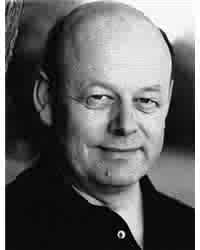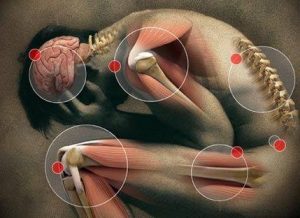Hypnotism and the Hypnotherapist Actor Shaman and Shakespeare

The Hypnotherapist The Shaman The Actor and Shakespeare the Hypnotist
Stories: As far back as I can remember I have heard or seen or experienced or, if I am writing, imagining new stories. was told stories to entertain me or jokes which were stories with a punchline or at a Sunday School a teacher endeavoured to instruct me as Jesus had instructed his disciples using story, parable, metaphor and simile, in the hope that I would see the light and become one of the Faithful. I read stories in novels. When I became an actor I told stories in many different ways. As a Hypnotherapist I use the power of stories to make a point and reframe a perception. Milton Erickson would help someone move on with their life by telling a tale of “My Friend John” and how he had to move House and realised that his house was full of clutter and in order to move he had to clear the clutter away – especially in the attic – and only take with him what he really needed. I paraphrase, of course, but doesn’t every good story teller embellish or fit the story to their needs?
Scheherazade had to use stories to stay alive – she would be killed if she reached the end of a tale – so she nested stories within stories so one minor character would launch another story before the other had finished. The ARABIAN NIGHTS is full of jokes, stories which are metaphorical, or have some element of instruction, or characters with whom we can empathise. Great stories seem to plug in to the collective unconscious no matter what the culture – the only barrier being the language of communication.
Shakespeare could tell a story on a number of levels – as entertainment, discussion, insight into the Human condition employing a full range of sophisticated techniques. His was an epic form of theatre. Naturalism came about and was another way for us to empathise with the plight of others.
This Theatre was condemned as voyeuristic “keyhole theatre” by Brecht who spoke of a Theatre which would provoke debate – the “dialectic” – he had a model of a street corner where if an accident occurred one person may perceive the accident as a minor inconvenience which is impeding his journey to work – he sees his time as important so wants to get moving, another may see his trashed car as his ruination and blames the man in a hurry for causing the accident, the outside observer of the accident may side with one or the other and may reframe the whole incident in terms of class or sees it as symptomatic of all the ills in society. Each character has their own frame of reference, which they bring to the factual accident and each one’s views are coloured by who they are their experience upbringing and their viewpoint on life. A Police person coming to the scene of the accident will have to try to sort out the facts of the accident and apportion blame as he or she sees it. A Judge may then decide differently to all the participants at this street corner… and so on. The audience will debate it and make their own decisions but Brecht hoped it would reframe their perceptions and make them think about the situation more flexibly.
This article itself is a shaggy dog tale. You may wonder what links these apparently disparate groups of story tellers: actor, shaman, priest, spiritual leader, hypnotherapist – but there is a common thread.
Great Actors are Hypnotists
Sir Laurence Olivier walked on to the stage at the Academy Awards to receive an Honorary Oscar in 1979 to the longest standing ovation I have ever seen. Here is a link if you want to watch http://www.youtube.com/watch?v=TSgvp0l1n2s.
I think that he is spellbinding and a hypnotherapist would recognise the patterns that he is using. It sounds from the heart – but knowing Olivier – he would have prepared that “spontaneous” speech with care – with no cue cards – and it is interesting that he was interested in hypnosis.I was talking to a lady who had seen him play Archie Rice in THE ENTERTAINER at the Royal Court Theatre. She and her husband were late. It was a time when people wore gloves to the theatre. They were shown into the auditorium. Olivier stopped and watched them walk all the way down to their seats with a terrible stillness. There was absolute silence. He waited until they had sat down and fixed the hapless Woman with his gimlet eye. He raised one eyebrow and the audience erupted in laughter. She was horrified. He continued without verbally commenting on the incident. Her attention was immediately grabbed. The next moment it was the interval. She looked down and saw that she had taken one glove half off. She described him as “mesmeric”.
I am also an actor as well as a hypnotherapist and recognise that “first person present” feeling on a stage. The audience puts you under a microscope of attention. You are like an athlete “in the zone” of concentrated focus which is very attractive. Even a person texting can be in the zone and not be aware of the outside world for a moment. There is an immediate fixation of attention. The audience of the actor are alive to everything that you do – from what you say – to your physical reaction to others is the magic of the story teller. “Play is play” – as Peter Brook – the distinguished Theatre Director said. Peter Brook described the most memorable theatrical moment as seeing a troupe of German actors just after the Allies had entered Berlin in the Second World War. They and the soldiers and the population were all starving. The players has a feast scene with no food – but the shared feeling of hunger was so great that each mimed piece of food was really seen, experienced, and felt in a universal hallucination. Children can make up their own stories from cloud shapes or their imagination. – they are natural story tellers. The skill of an actor is also like that of a great hypnotist as I will explore further.
Two of the Fathers of Hypnotherapy:
Milton Erickson also like to employ the magic of the story teller – using metaphor and anecdote to work his particular brand of magic. David Elman too was not averse to using the magic of imagination. Stanislavski’s famous system of training for Actors – adapted into the Method in America – has at its heart the Magic If – “What if…. ?” The actor can generalise from their own experience and let the imagination flow … so does a great hypnotherapist entering into the world of their client and using imagination to facilitate change.
Acting and story telling was probably invented by the first Hunter trying in dumb show to tell the story of a hunt and teach others by his story how to do it and perhaps, as thye became more adept, also giving his audience a sense of the Mystery of the Universe.
This became formalised by the Greeks where the Actor called The Protagonist was a Priest – the Chorus helped tell the story and comment on the action by singing chanting and dancing – the Protagonist eventually needed an Antagonist so we have two Actors and a Chorus and eventually a troupe of actors and the invention of Drama. The Priest became just a Priest but had his own kind of Theatre of Ritual and Chanting – as does a Shaman – the audience would enter a light trance state in all these examples more often than not and they would learn at a deep level and feel great or undergo “catharsis” or cleansing.
The use of language and rhythm
I was lucky enough to do a workshop with a great Italian actor – Dario Fo. He felt that verse structures had come out of work songs – the Italian Terza Rima that THE DIVINE COMEDY is written in was always considered to be an aristocratic invented high verse form but he demonstrated to me that it was exactly the 3 part rhythm used by a Venetian Gondolier when moving his Gondola and reflected in his work song – which in itself is a work trance. Pole in – push down – pole up. Work songs all reflect the rhythm of the work done. Weavers in the Highlands working together and singing a rhythmical song share in common with African tribes people singing a work song or chanting.
You may wonder what all this has to do with hypnosis – but rhythm and language is at the core of our work in inducing trance. Shakespearean Blank verse is a heart beat – one strong and one weak stress – use that with skill and like Sir Laurence you will have an audience mesmerised. The words that are used are important and clean language is very important to some – isn’t the structure and rhythm and frame and empathy also important?
Nathan Lane worked with a friend of mine in THE PRODUCERS at Drury Lane Theatre in London and he would assess the audiences’ needs in the first scene – did they prefer verbal humour or physical slapstick or a combination or what…? Every night his performance differed and every night the audience wept with laughter – I certainly witnessed his spell binding power at work – I have never laughed so much! I wonder whether as hypnotherapists we assess our audiences needs enough? Are we buried in a script or are we watching their response and listening to what they are really saying and responding as a good story teller would and take the story in a different direction in a different way?
I ask myself whether I am exploiting the power of rhythm and my voice enough? I also wonder that as Hypnotherapists – of whatever flavour – if we pay enough attention to one of our principal assets? Certainly I have heard some “Professional” Hypnosis CDs that would attest that in some cases we don’t pay enough attention to understanding how to use our voice well! The Production work on some CDs also needs some attention. Often content is great and delivery leaves a lot to be desired. There was a time when quite seriously the preferred voice to be used for hypnosis was the monotone – so boring the client into hypnosis. One Ericksonian teacher, Russell Potts, jokingly said that you had to get the Erickson gravelly voice to succeed! We are encouraged to work on our “Hypnotic Voice” in training – but do we do enough work on our voice and how we use it? As an actor I know that the potential of the voice is limitless in telling a story – telling a joke is very different to playing Shakespeare which is on multiple levels and needs careful shading and emphasis – and as for telling a story in Mime or Dance or Singing – that is another level of skill – yet all of these skills can be relevant.
Not that I am suggesting miming, singing or dancing, hypnotherapy! Just that physicality, body language and the tone of the story teller and hypnotherapist and their audience is also key. Many of us also know that certain ways of speaking can powerfully affect the successful embeddings of the suggestions made for our clients benefit.
Finally I was talking to a Shaman recently: The modern Shaman and his forbears recognise and employ story telling, trance, reframing, rhythm and many of the tricks of the hypnotherapist’s trade.
I was then listening to the recently released CDs of Dave Elman speaking and demonstrating his approach to hypnosis. When he spoke of the History he only really mentioned Mesmer, Esdaile and Braid – but if Mesmer rediscovered elements of Hypnosis in his Mesmerism and Braid rediscovered fixation and naming it as Hypnosis ( Monoideism his other suggestion!) and Esdaile deep trance states – how much are we forgetting the power of the actor and shaman in producing the same states? Staring into a fire or a scrying glass will certainly produce an altered state as will dancing to a rhythm or chanting or the use of mood altering drugs. The Aboriginal knows as much about trance as the most sophisticated practitioner of hypnosis I would contend.
What is there to learn from all this? “There are many roads to the truth”. It is interesting, too, that story telling and the use of the creative imagination are at the heart of hypnotic practice. As with acting there is no “one way” – Naturalism in Theatre is one style just as Elman in Hypnotherapy is another – we all use many approaches and techniques – often simultaneously. “Whatever works”.
As the Buddha is purported to have said on his death bed: “Don’t follow me. Find your own light.”
There is a straight line through from the first Shaman through actors and healers and holy men like Jesus to Mesmer, Braid, Esdaile, Olivier, Gielgud, Elman, Erickson and many modern day hypnotists. It is story telling and the utilisation of metaphor, simile, rhythm, elements of vocal shading, creative imagination, body language and trance. Rapport between story teller and audience and the endless shifting of the story to suit the listener. But also I believe there is more to discover about the actual power of the voice as well as the power of metaphor and simile in storytelling, acting, proverb, joke and parable.
It is no coincidence that we are often taught to explain trance as being like: “Lost in a good book or film.”
Copyright 2011, Graham Howes
https://grahamhoweshypnotherapy.co.uk
Call: 07875720623
Email: grahamahowes@me.com



 Giving Birth with less pain – hypnosis to help with conception and pregnancy
Giving Birth with less pain – hypnosis to help with conception and pregnancy



